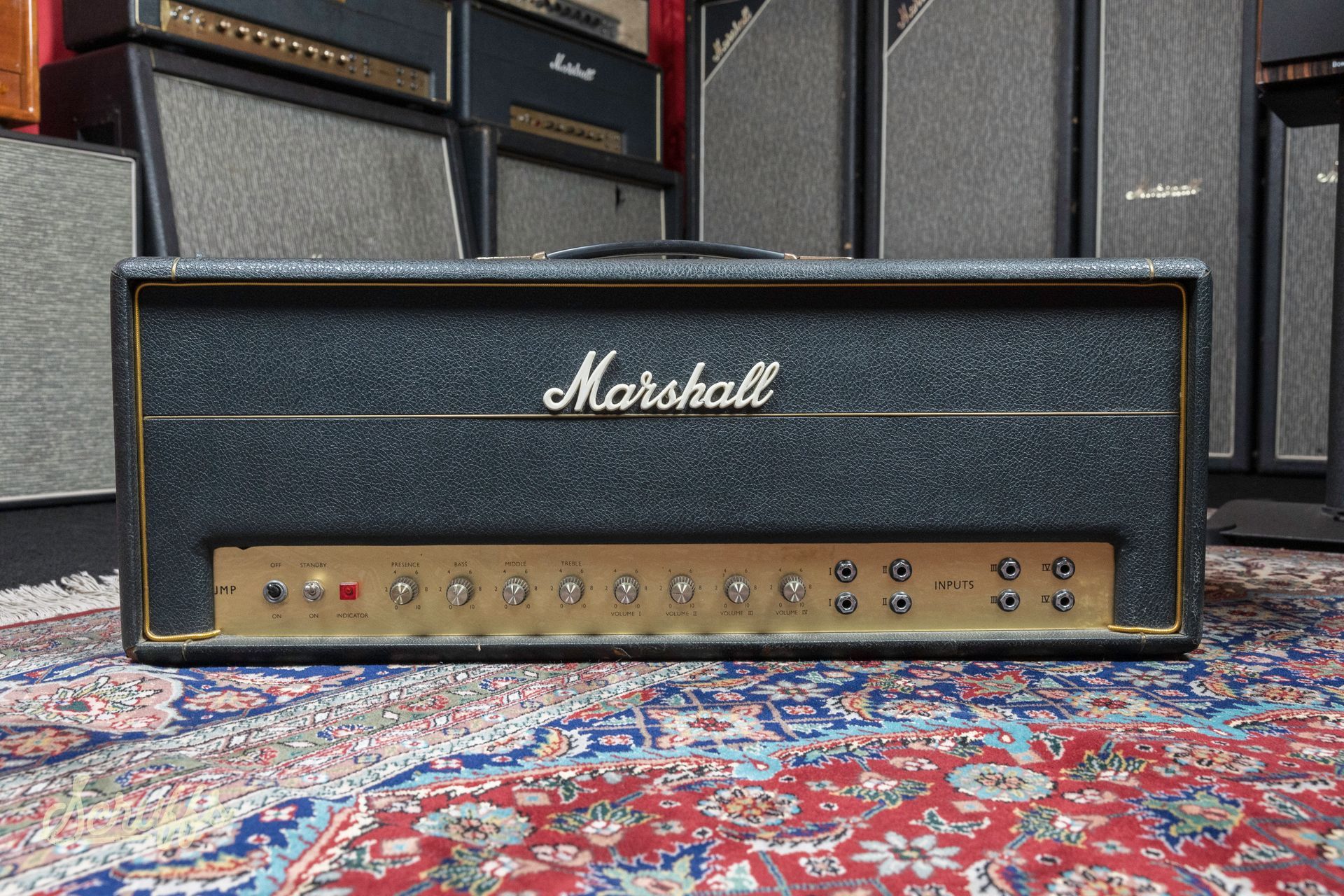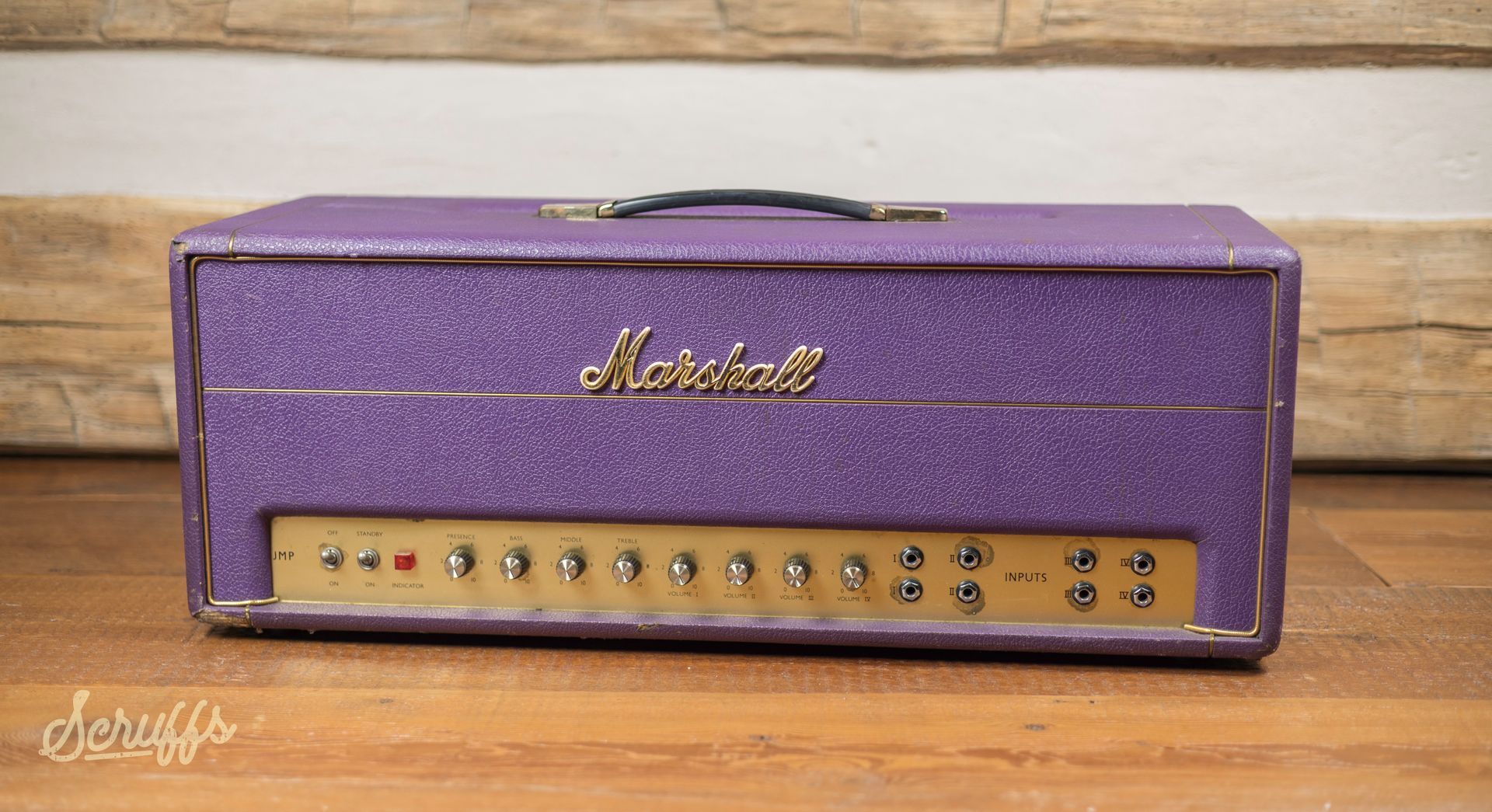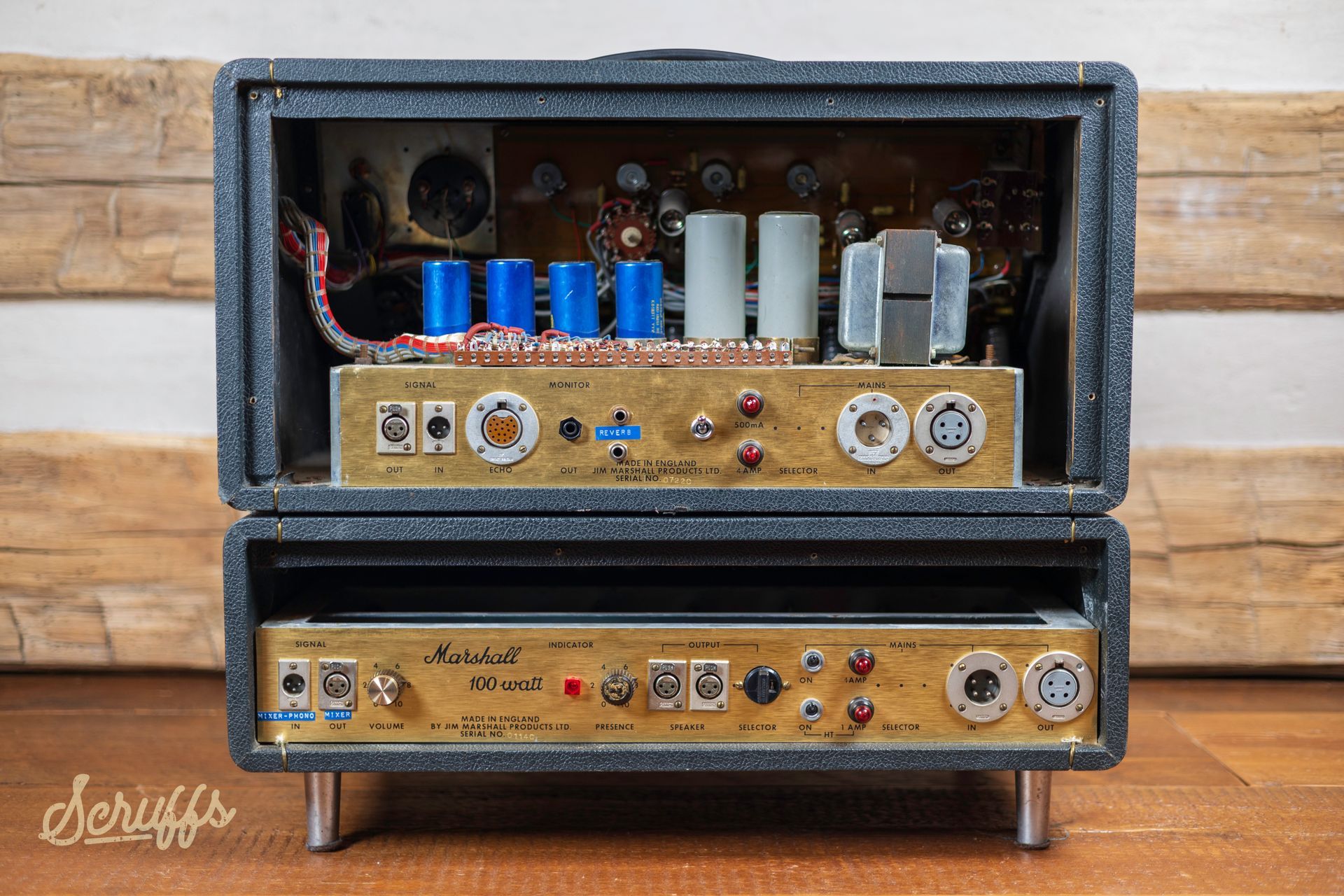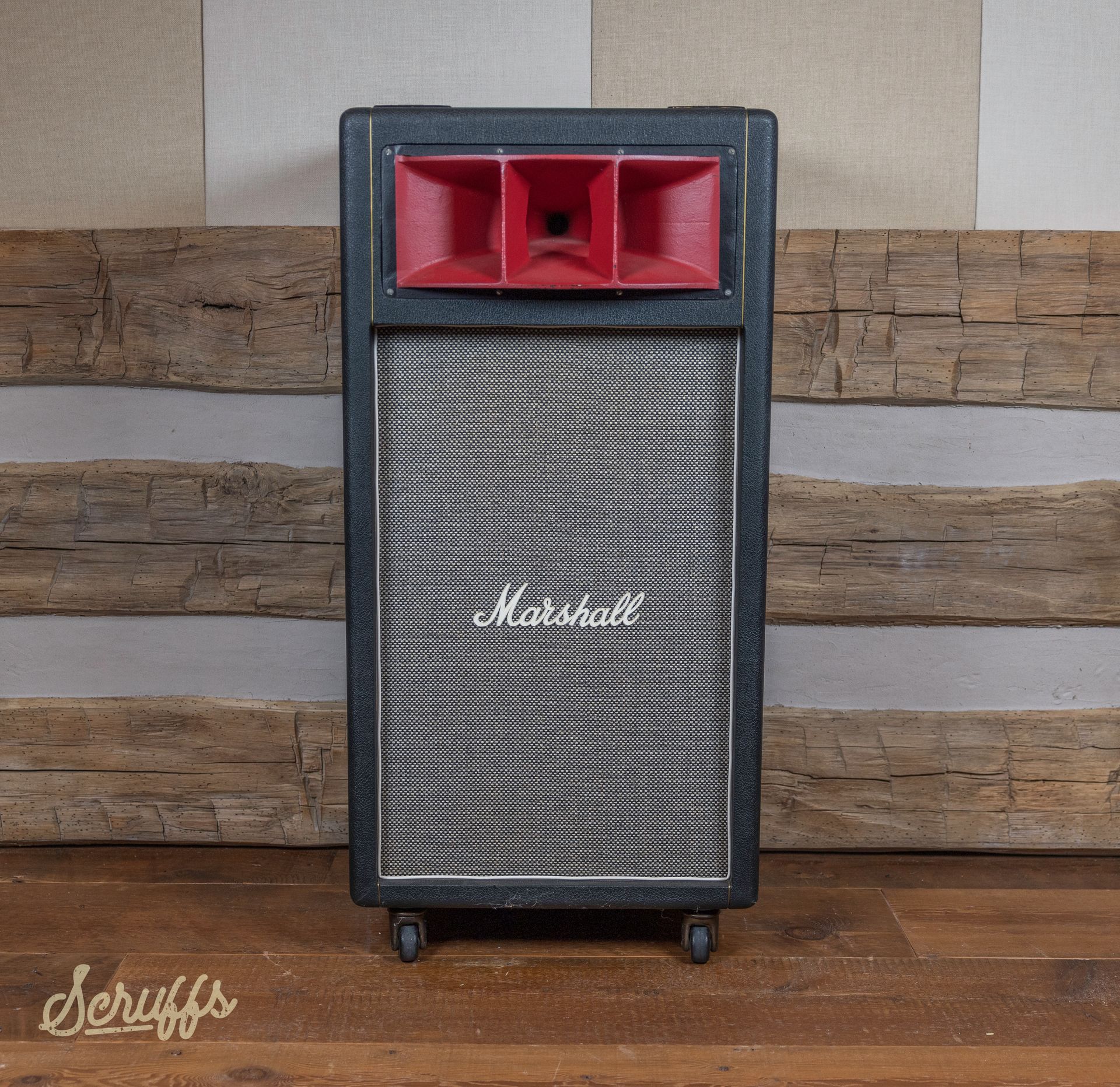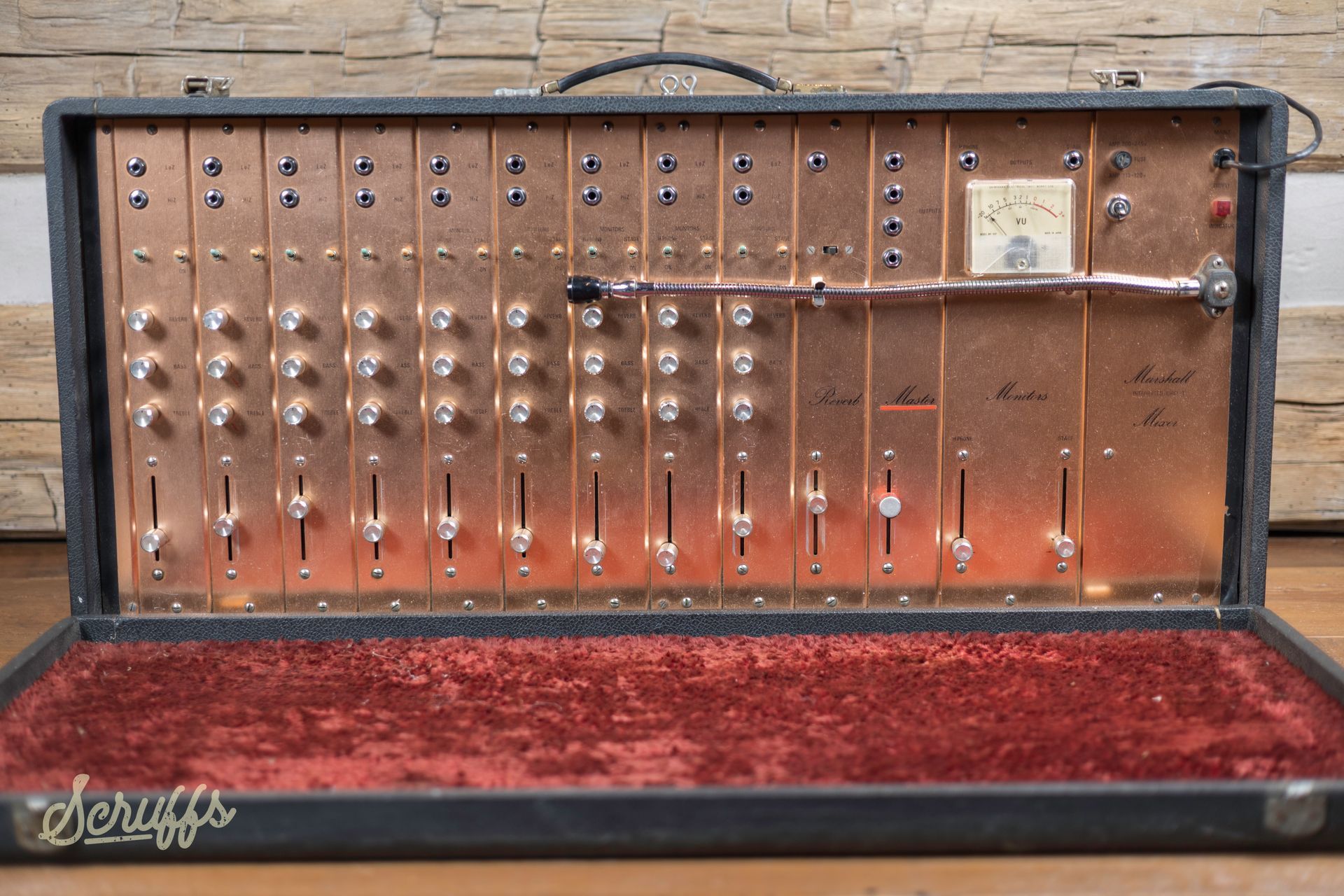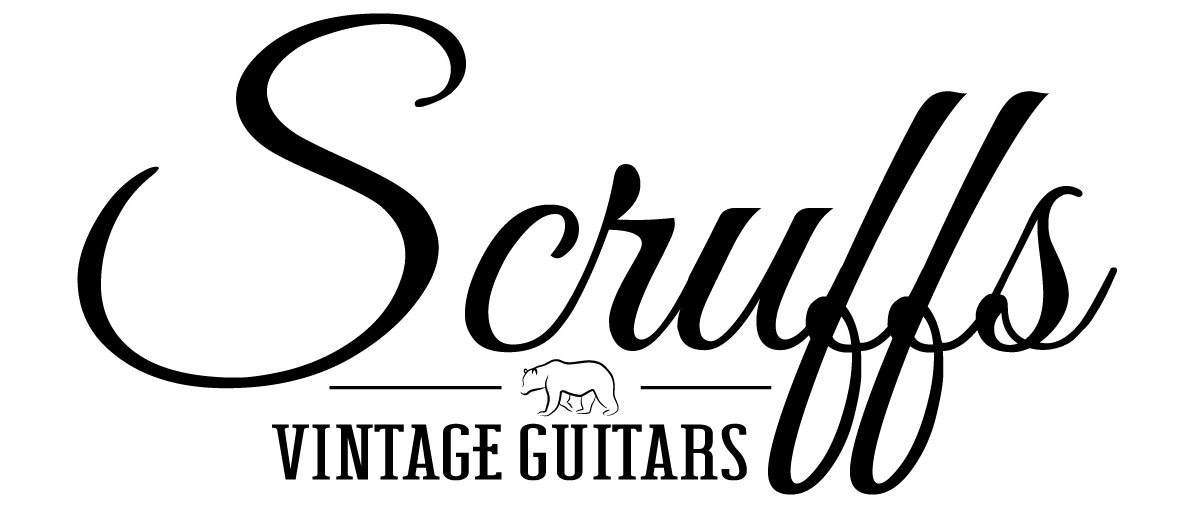Trainwrecks: A Brief History

Trainwreck amplifiers are legendary and rare. They were handbuilt by the late Ken Fischer in his workshop in Colonia, New Jersey. Fischer began his career in tube amplifiers in the 1960’s working at Ampeg. He designed and built the first “Trainwreck” branded amplifier in 1982 for Casper McCloud. This first amplifier design would later become the “Liverpool” model. Two models followed shortly after; the “Express” and the “Rocket”.
While the circuits of these amplifiers look deceptively simple on paper, the real secret to their uniquely touch sensitive and highly harmonically complex nature is the degree to which they are finely tuned to live right on the edge of instability. Minimal changes in player input result in big changes in tone and amplifier response. Fischer himself likened this design concept to that of an F-16 fighter jet that can turn on a dime due to its design to dance around the line of stability.
With a Trainwreck amplifier, an experienced guitar player can go from crystal clear, bell-like clean tone to a searing, high gain lead
sound simply by adjusting his or her right hand attack. These amplifiers transition seamlessly with little change in the output volume. They are exhilarating to play and offer a feeling of direct connection to the speaker. The response is immediate and predictable, ultimately putting the player in total control of his/her sound.
The tone of these amplifiers drips with harmonics; the notes feed back and sustain at will, with a chorus of overtones. This gives Trainwreck amplifiers an unparalleled depth and richness that is beyond what the very best vintage reference amplifiers can do.
This “Trainwreck sound” is the result of meticulous component selection and layout. Lead dress, chassis material, and even the headshell material matter. A Trainwrek amplifier will pick up resonance from the wooden headshell and incorporate it into its sonic recipe. They sound slightly different when removed from the shell! Getting these amplifiers to perform as intended is a complex balancing act; where no single aspect is left to chance. For this reason, each Trainwreck amplifier took a long time to build. It is also why not many exist.


Sometime in the 1990’s, Ken Fischer fell ill with a viral infection and developed Chronic Fatigue Syndrome, something he would struggle with for the rest of his life. This obviously further slowed the rate at which Fischer could produce amplifiers. By the time of his untimely death in 2006, his waiting list had grown to over 1500 names and only an estimated 70 Trainwrecks amplifiers were ever completed.
In his later years, Fischer partnered with Komet Amplification in Baton Rouge, Louisiana to carry his legacy. This resulted in a longtime mentorship between Fischer and Komet Amplification co-founders Holger Notzel and Micheal Kennedy. Notzel knows Trainwreck amplifiers inside and out.
In recent years, Notzel has joined the Scruff’s Vintage team making us uniquely qualified to both verify and service Trainwreck amplifiers. Please contact us if you need help verifying or servicing a genuine, Ken Fischer built Trainwreck amplifier. Also, we are always interested in purchasing Trainwrecks. If you are interested in selling your Trainwreck amplifier, click here!
Currently, we have three original Trainwreck amplifiers available for purchase at Scruff’s Vintage Guitars. Fischer believed that each amplifier possessed a unique personality, so he chose to give his amplifiers female names instead of serial numbers. The amplifiers currency available at Scruff’s Vintage are a Liverpool “Lucy”, Express “Heather” and Express “Amanda Lynne”.

The Liverpool model is a 30-watt amplifier based on quad of cathode biased EL84 output tubes and three 12AX7/ECC83 pre-amp tubes. The controls are Volume, Treble, Midrange, Bass, and Presence. There are no master volume, effect loops, reverb, or any other effects built into a Trainwreck. Kischer believed in a very precise and finely tuned circuit with the shortest signal path possible. These amplifiers are like a racecar that comes into its own at speed. They require a certain volume to reveal their magic. They can, of course, be played at quieter volumes and will continue to deliver a stunningly complex clean tone when operated this way. However, the harmonically explosive overdrive comes in when the output tubes begin to go into saturation.
The Liverpool model is slightly less powerful than the Express. Its cathode biased output stage gives it a beautiful, warm and singing tone with the EL84 tubes’ famous crystalline top end. Despite that top end clarity, the tone is never harsh or brittle. The bottom end is full, but never bloated. The midrange is pronounced and detailed, with a slight emphasis in the upper-mids. There is a natural compression to the tone, with a resulting bloom of notes that is addicting. This amp just feels good to play!
The Express model is based on a pair of EL34 power tubes operating in fixed bias mode, for about 35 to 40 Watts of power. The control layout is the same as the Liverpool; Volume, Treble, Midrange, Bass, Presence. The preamp of the Express is voiced slightly differently to compliment the power tubes. A Trainwreck’s preamp is wide open, with no attenuation between gain stages and no stability correction circuitry. When that preamp starts to drive the power tubes into clipping, you can really hear their distinct character. This is where the Express’ EL34s give a bigger bottom end then the more focused EL84s of the Liverpool. The mid emphasis is a bit lower and thicker. The top end is still crystal clear and present, but it is not quite as jangly as the Liverpool's. The feel is slightly faster and punchier; sometimes a bit more aggressive and crunchy.

Another component that needs to be discussed are the output transformers. An output transformer is a crucial ingredient to any tube amplifier's sonic recipe, and it is especially true for Trainwreck amplifiers. When Fischer first started building Trainwreck amplifiers, he was able to source off the shelf units that suited his needs perfectly. Fischer's output transformer of choice was produced by Stancor (Standard Transformer Company of Chicago). When Stancor stopped producing this particular transformer in the 1980s, Fischer turned to Pacific Transformer in California as a suitable replacement. Fischer made some engineering changes to an old Stancor design in order to fine tune aspects. Pacific Transfomer then started building transformers for Trainwreck amplifiers. When you hear someone speak of “old transformer” vs. “new transformer” Trainwrecks, this is what they are referring to. It is a bit treacherous to try and describe the sonic differences between the transformer types, as we are hearing them in the context of an amp that was specifically voiced around its particular output transformer. But in very general terms, the “old transformer” Stancor equipped amplifier can be sweeter and more vintage sounding, with a rounder top end and throaty mids. The “new transformer” Trainwrecks can be more aggressive and mid forward, with maybe a slightly brighter top end.
All of the Trainwreck amplifiers that are for sale here at Scruff’s Vintage are fully original as they left Fischer’s shop. They have had no repairs or modifications of any kind. They have been fully tested and checked to be 100% healthy by Holger Notzel.
Trainwreck amplifiers were meticulously designed to deliver a touch-sensitive and harmonically rich tone by living on the edge of instability. Renowned guitarists such as Warren Haynes, Keith Urban, Brad Paisley, Mark Knopfler, and Billy Gibbons have all recognized the unparalleled sonic qualities of Trainwreck amplifiers. With their ability to seamlessly transition from crystal-clear cleans to searing overdrives and their immediate response that puts the player in total control, Trainwreck amplifiers offer a direct connection and a truly exhilarating playing experience. The distinct personalities of each amp, represented by female names, further emphasize their uniqueness and individuality. If you're fortunate enough to own or have the opportunity to play a genuine Ken Fischer-built Trainwreck amplifier, you'll be able to experience the extraordinary sonic depth, richness, and harmonic complexity that sets these amplifiers apart from the rest.



